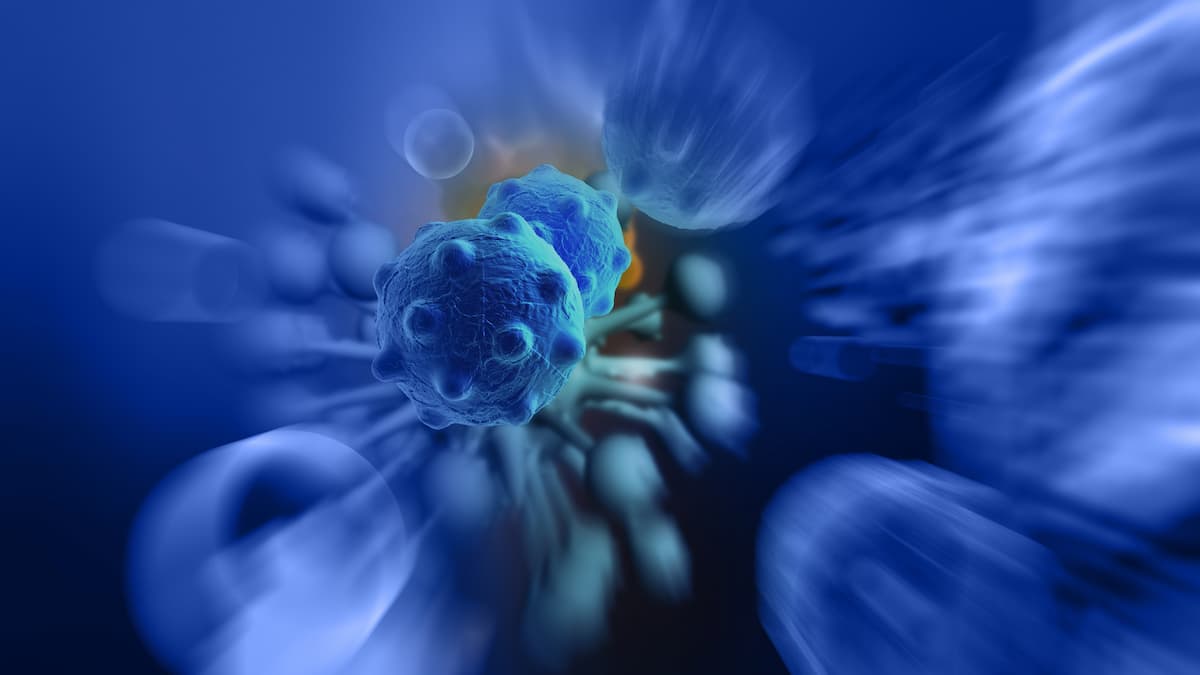EMA Accepts Marketing Application for Linvoseltamab in R/R Multiple Myeloma
Findings from the phase 1/2 LINKER-MM1 trial support the marketing authorization application for linvoseltamab in the management of relapsed/refractory multiple myeloma.
Supporting data for the MAA in this indication came from the phase 1/2 LINKER-MM1 trial (NCT03761108) evaluating linvoseltamab in patients with relapsed/refractory multiple myeloma.

The European Medicines Agency (EMA) has accepted a marketing authorization application (MAA) for linvoseltamab as a treatment for adult patients with relapsed/refractory multiple myeloma, according to a press release from Regeneron Pharmaceuticals, Inc.1
Specifically, the indication includes those with disease progression following 3 or more prior lines of treatment. Linvoseltamab, an investigational bispecific antibody, is designed to employ CD3-expressing T cells for bridging B-cell maturation antigen (BCMA) expressed on multiple myeloma cells, thereby yielding T-cell activation and cancer cell death.
Supporting data for the MAA in this indication came from the phase 1/2 LINKER-MM1 trial (NCT03761108) evaluating linvoseltamab in patients with relapsed/refractory multiple myeloma. According to previously published data, a 200 mg dose of linvoseltamab produced an objective response rate (ORR) of 71% among 117 evaluable patients based on an independent review committee (IRC) assessment after a median follow-up of 11 months.2 Additionally, a complete response (CR) or better was highlighted in 46% of patients. After at least 24 weeks of treatment, patients with a very good partial response (VGPR) or better switched from dosing every 2 weeks to every 4 weeks.
Any-grade and grade 3 or higher adverse effects (AEs) at the 200 mg dose level, respectively, affected 100% and 85% of patients. Cytokine release syndrome (CRS) occurred in 46% of patients, which mostly consisted of grade 1 toxicity (35%). Any-grade adjudicated immune effector cell-associated neurotoxicity syndrome (ICANS) was reported in 8% of patients, with 3 patients having grade 3 toxicity.
Investigators highlighted any-grade infections in 73% of patients, with grade 3/4 instances affecting 34%. Additionally, 12% of patients died due to treatment-emergent AEs (TEAEs) during treatment or within 30 days of receiving their final dose; investigators attributed 9% of these deaths to infections.
“Multiple myeloma remains an incurable disease, in which patients have cycles of relapse and remission, resulting in a critical need for innovative medicines,” L. Andres Sirulnik, M., PhD, senior vice president of Translational and Clinical Sciences, Hematology at Regeneron, said in a press release on these findings.2 “With longer follow-up data on linvoseltamab, we’re seeing deep and durable responses with a [CR] rate nearing 50% in a difficult-to-treat patient population who had received a median of 5 prior lines of therapy….This regimen saved time for clinicians and patients, underscoring the potential for linvoseltamab as a patient-centric option in relapsed/refractory multiple myeloma.”
The ongoing, open-label, multi-center LINKER-MM1 trial is evaluating linvoseltamab among patients who had received 3 or more prior lines of therapy or were triple refractory. Investigators administered study treatment using a step-up dosing regimen intended to help manage CRS.
The trial’s primary end points include dose-limiting toxicities, TEAEs, AEs of special interest, ORR based on IRC assessment, and CRS. Secondary end points include duration of response, progression-free survival, overall survival, health-related quality of life, and patient-reported global health status.
Patients 18 years and older with response-evaluable multiple myeloma based on 2016 International Myeloma Working Group criteria and an ECOG performance status of 0 or 1 were able to enroll on the trial. Additional eligibility criteria included having disease progression following at least 3 prior lines of treatment including a proteasome inhibitor, immunomodulatory drug, and an anti-CD38 antibody.
Developers previously submitted a biologics license application to the FDA for linvoseltamab as a treatment for those with relapsed/refractory multiple myeloma in December 2023.1 Additionally, investigators plan to assess the agent as part of the confirmatory phase 3 LINKER-MM3 trial (NCT05730036), which is currently open for patient enrollment.
References
- Linvoseltamab receives EMA filing acceptance for treatment of relapsed/refractory multiple myeloma. News release. Regeneron Pharmaceuticals, Inc. February 2, 2024. Accessed February 2, 2024. http://tinyurl.com/4k32t22e
- Updated linvoseltamab pivotal data demonstrated strong rates and depth of response in patients with heavily pre-treated multiple myeloma. News release. Regeneron Pharmaceuticals, Inc. December 7, 2023. Accessed February 2, 2024. http://tinyurl.com/3n7mvyk8